Most of our area is considered a high risk TB area and farms are tested at least annually. We work with XL Farmcare to undertake the statutory testing requested by the APHA.
Farmers must notify the APHA when first establishing a herd or moving to a new area. Cattle will undergo a New Herd Check Test, which must be completed within 12 months of arrival of the first animal. Further details of TB testing are available from the APHA and TB Hub.
If you are considering the purchase of animals from a particular area, the TB Hub gives information relating to TB outbreaks within that locality. This can be useful when assessing the risk of buying in disease. The TB Advisory Service publishes information on a regular basis to help farmers control TB and to reduce the risk of future breakdowns – see their website or follow on Facebook and Twitter.
Bovine TB Herd Accreditation is available through a voluntary scheme run by the Cattle Health Certification Standards provider. If you have a low risk holding and have not had a TB breakdown for a year, it may further help you minimise disease risk. Please see their website or speak to one of our large animal vets for more details.
Johne’s Disease is caused by a bacterium that persists in the environment for long periods of time. It causes adult cattle to waste away and die. The incubation period tends to be many months or even years, making it difficult to control. Cattle are generally infected during the first years of life when either born of an infected cow or born into a contaminated environment.
Other ruminant species such as sheep and goats can also be affected. The disease has been found in rabbits and may well persist in other wildlife species.
The bacterium involved (Mycobacterium avium subspecies paratuberculosis – or ‘MAP’) has been linked to Crohns Disease, an inflammatory human bowel disease. Whilst a direct link has not been found, the Food Standards Agency and DEFRA have advised a precautionary approach in case future evidence comes to light. Crohns Disease has no cure and thus any factor that may be involved in the disease cannot be ignored.
Johne’s Disease can be ‘tested for’ in faeces, blood and milk. Various schemes are available: for beef herds, blood tests and faecal sceening is required. For dairy herds, screening through milk is also possible.
Within the practice several veterinary surgeons are trained as BCVA Johne’s Certified Veterinary Advisers (BAJVA) and are able to advise on the best control strategies when the disease is found on farm.
The National Johne’s Management Plan launched in 2015 and focused on education and recognition of the disease. Phase 2 started in 2018 and is ongoing. This requires farmers to choose one of six control strategies and work towards eradication of the disease.
See the Action Group on Johne’s website for more information, or speak to one of our large animal vets.
BVD (Bovine Viral Diarrhoea) is a complex viral infection that can devastate a herd. In the latter stages of the disease it causes rapid weight loss and death from dehydration – due to extensive gut ulceration. In the early stages of the disease, however, younger animals lose the ability to fight off disease and succumb to other types of infection.
If a cow becomes infected for the first time during the early stages of her pregnancy, the calf she is carrying can become infected. The calf may die in utero or be born with abnormalities – if it survives it will be persistently infected.
It is the ‘persistently infected’ (or PI) calf that causes havoc within a herd. Not only will it spread disease to others, but it will be less good at protecting itself from minor infections. We saw an example of this ‘havoc’ a few years ago when a previously uninfected herd picked up the virus from a bought-in animal. The animal in question appeared to be healthy – as some can do – but when it was mixed with early pregnant cows, the damage was done.
Cows can sometimes abort but in this case, calves were carried through to term and born normally. It was only when we saw increased cases of navel ill, joint ill, scour and septicaemia in the newborn calves that their infection was confirmed. Those calves either died or were very difficult to rear, causing huge economic loss.
Please talk to one of the team about health screening and biosecurity when buying in. Subsidised testing is available – it is often practical to blood sample home-bred cattle during a TB test, so please bear that in mind when making a booking.

